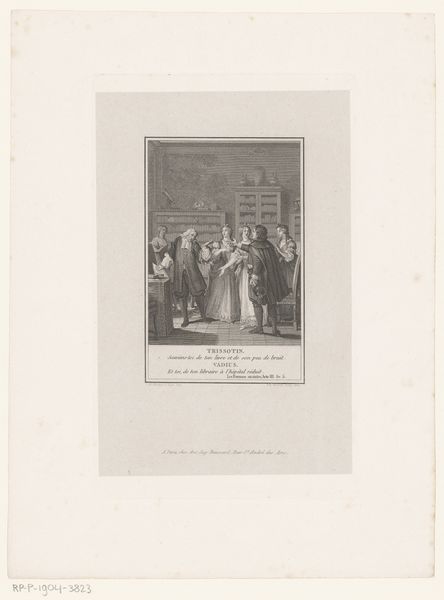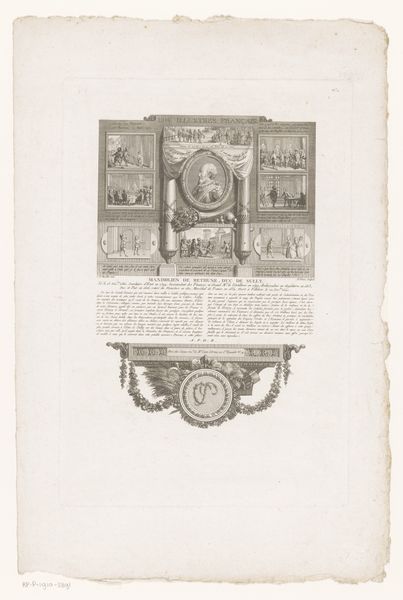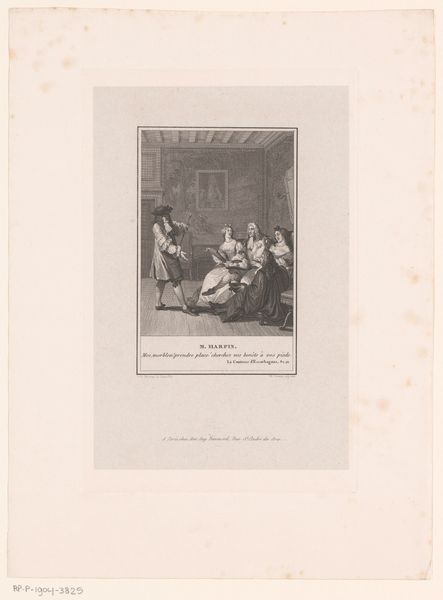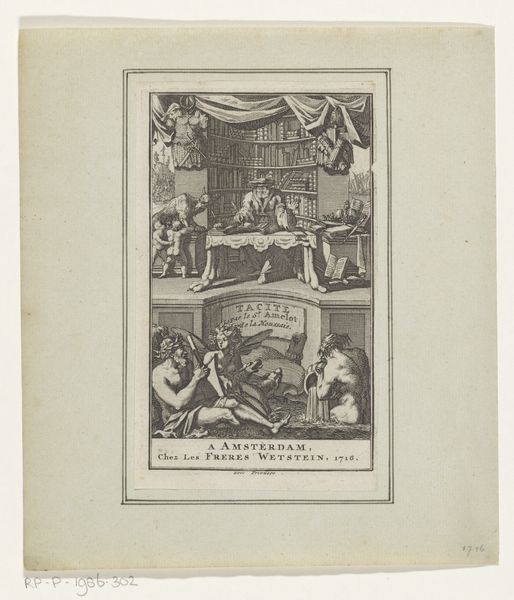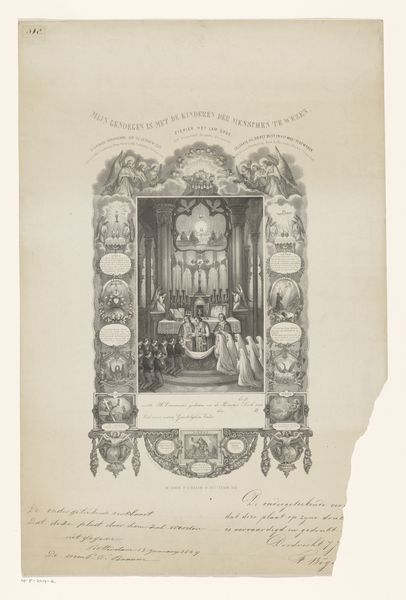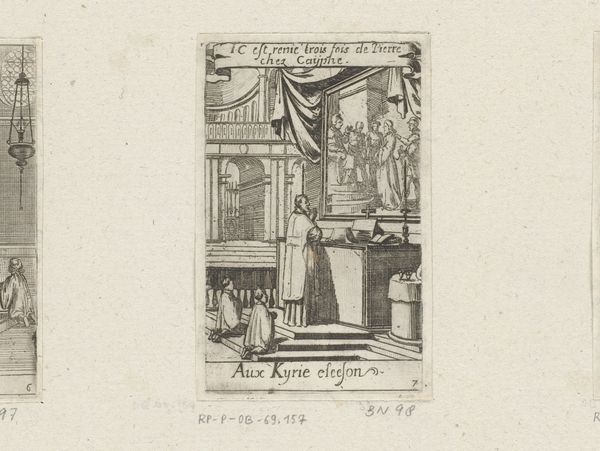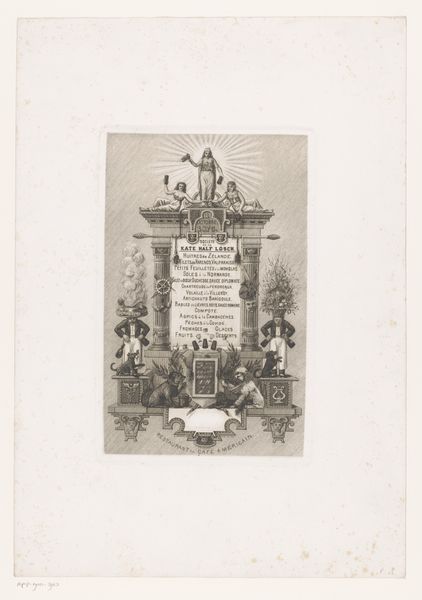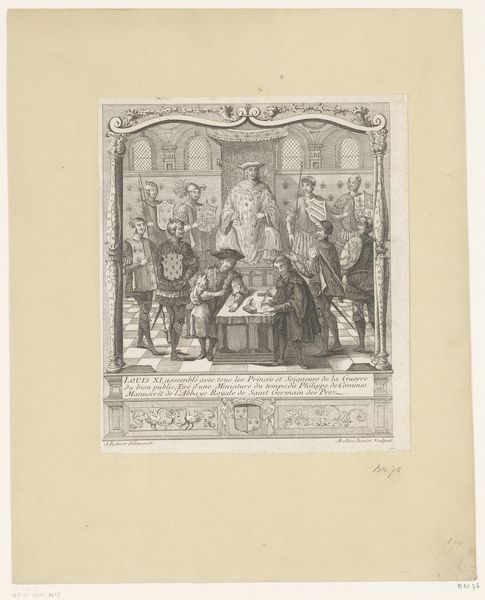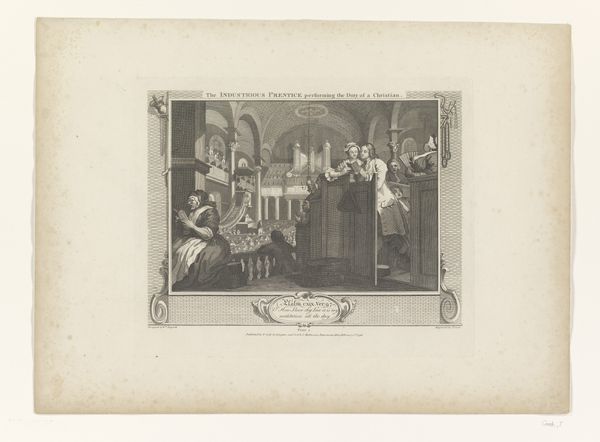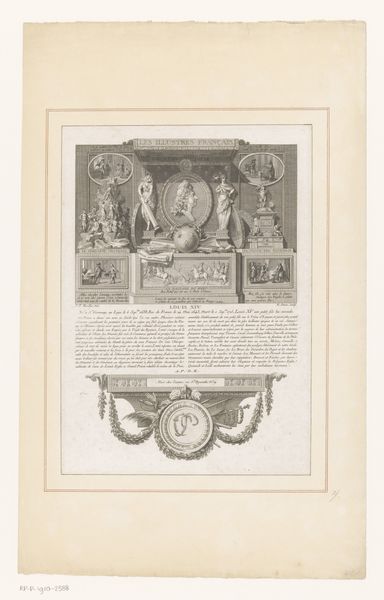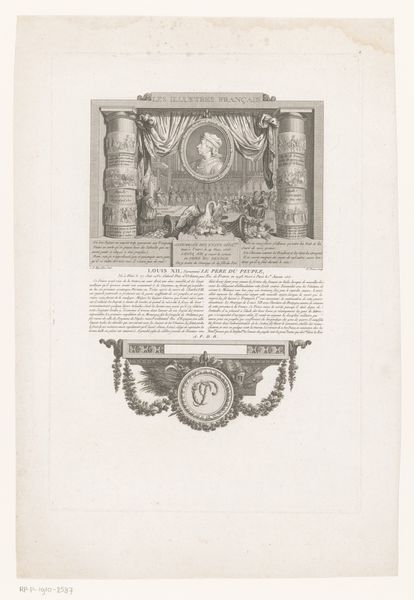
print, paper, ink, engraving
#
narrative-art
#
dutch-golden-age
#
ink paper printed
#
parchment
# print
#
old engraving style
#
figuration
#
paper
#
ink
#
line
#
genre-painting
#
history-painting
#
engraving
#
realism
Dimensions: height 113 mm, width 61 mm
Copyright: Rijks Museum: Open Domain
Curator: I'm struck by the clear, linear quality of this engraving. The precise lines, the stark contrasts of light and dark—it all builds such a dramatic and rather austere space. Editor: Indeed, a serious mood hangs over this print. What can you tell me about its history and the materials used to produce this image? Curator: The piece is entitled "Rechtszitting met weeskinden en stiefmoeder", or "Court Session with Orphans and Stepmother," and it dates back to 1658. Crafted with ink on paper through the engraving process, the technique and readily available materials speak to the growth of print culture during the Dutch Golden Age and the possibility for wider audiences to access such subject matter. Editor: The way the engraver used line to define form is quite remarkable. Look at the varying thickness used to create shadows, modeling depth across faces and clothing, not to mention architectural details. It establishes a strong, if not slightly unsettling, sense of depth. What is the primary focus? Curator: The work captures a scene of legal proceedings focusing on a vulnerable family dynamic. Court sessions, with a focus on orphans and family disputes, spotlight societal concerns for social welfare and proper family structure. Given the historical context, it invites consideration of issues related to patriarchy and the protection of children within marriage, which would be of great concern to many in that period. Editor: The composition is compelling too. The judges sit elevated and largely immobile while the orphans kneel in supplication. How interesting that the artist framed a moment of vulnerability amidst the authority of the state. The formality of this piece also speaks to its function. Curator: Precisely. The means of production is what allows the court and artist to disseminate what good governance might be, even into the homes of private citizens. Inexpensive materials were thus carefully manipulated. Editor: Reflecting upon our conversation, the formal structure is inextricable from the thematic material and how it may have circulated, especially within the context of family matters. Curator: Right, it highlights a world where even deeply personal concerns like family affairs become subject to formal structures of justice and visibility, with its accessibility contributing to social consciousness.
Comments
No comments
Be the first to comment and join the conversation on the ultimate creative platform.
